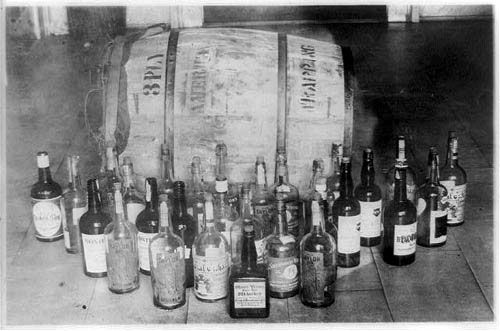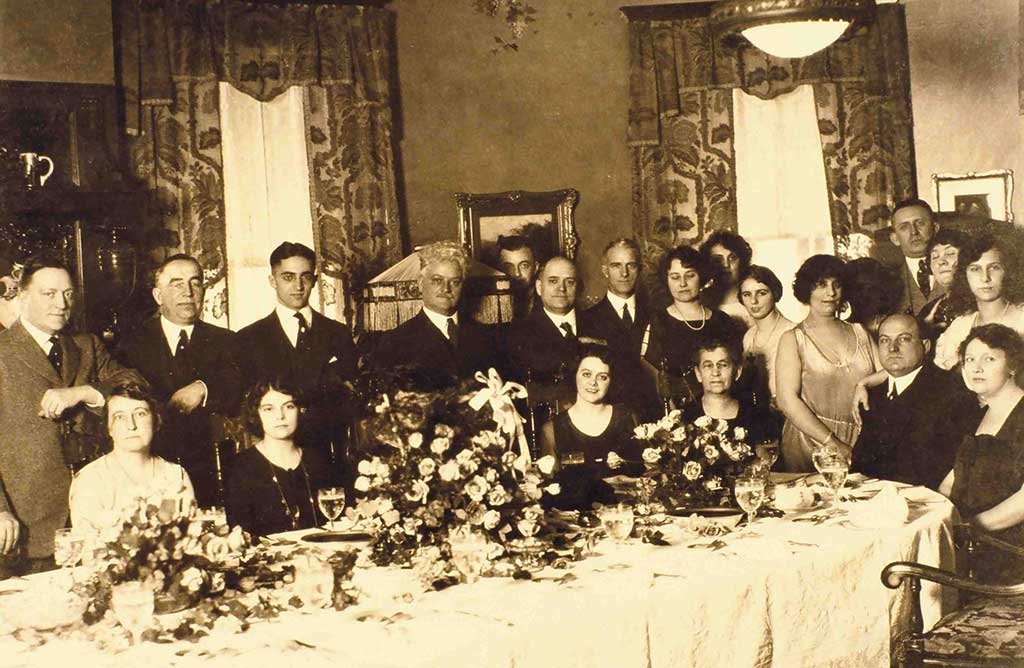How George Remus Kept Prohibition From Killing Bourbon
In honor of Bourbon Heritage Month I thought I would take a moment and look back on one of the darkest periods of our drinking history, the ignoble experiment known as prohibition.

In honor of Bourbon Heritage Month I thought I would take a moment and look back on one of the darkest periods of our drinking history, the ignoble experiment known as prohibition. The why and how of the 18th Amendment are a fascinating glimpse into our nation’s history and well worth looking into but today I want to focus on the effect prohibition had on bourbon, why whiskey producers were hit especially hard by its effects, and how George Remus, the king of the bootleggers, may have helped to save it.

Whiskey has a long and proud tradition in America, and prior to prohibition there nearly 3,ooo distilleries operating around the United States. At the 1893 World’s Fair there were 400 bourbons selected to represent Kentucky alone. Once prohibition went into effect in 1920 America’s bourbon producers were in a bad spot. Not only could they no longer make or sell bourbon, they had rackhouses full of aging whiskey which they could not even access without government permission. Some took a creative approach. During prohibition Joe Beam dismantled his Kentucky plant, carted it to Mexico and reassembled it there. Others took to stealing from their own rackhouses and with hundreds scattered throughout rural areas law enforcement had a difficult time guarding the stores. One way bourbon distillers could legitimately sell their ware was by using the medicinal loophole in the Volstead Act. Doctors were allowed to prescribe up to one pint of whiskey every ten days for medicinal purposes. This combination of unsecured rackhouses and a small but legitimate market for medicinal whiskey caused the government to order all remaining barrels of whiskey to be consolidated into large, licensed rackhouses where they could be guarded and regulated. The original owner could pay a fee to the consolidator to store their barrels there or, as was most commonly the case, they could sell the barrels and rights to the brand name to the consolidator. Prohibition had left many distillers so financially strapped that many of them had no other choice but to sell for pennies on the dollar. The three sons of J.B. Wathen, one of the owners of Old Grand-Dad, formed the American Medicinal Spirits Company and acquired the rights to Old Crow and a number of other popular bourbons. Because these brands were sold as medicinal whiskey during prohibition they were some of the few to survive as a continuous brand to this day.

It comes as no surprise that prescriptions for medicinal whiskey increased dramatically during prohibition. But this was a time when doctors were still somewhat of a luxury item and a pint every 10 days probably seemed stingy to the hardened drinker of that age. Most people didn’t bother with the more expensive legal option and instead bought bootleg liquor and this is where prohibition dealt a second blow to American whiskey. During prohibition bootleggers favored what ever liquor was the fastest, easiest, and cheapest to produce. Beer consumption declined because beer was too bulky to be worth while for bootleggers. Un-aged corn whiskey and bathtub gin became the easiest and most cost-efficent spirits for most people to obtain. Canadian whiskey and Scotch were smuggled in from Canada but like the medicinal whiskey, it was mostly only available to the wealthy. Not only were the people who made bourbon selling out and shutting down, the majority of American’s no longer had access to it. In addition, prohibition up-ended the social order of drinking. No longer was liquor confined to upper-class men in their clubs and working class-men in their saloons. Women began to drink with men for the first time in America’s history. Half of the population of the United States suddenly had access to alcohol in an unprecedented way and there was less whiskey waiting for them to try. Many female drinks gravitated toward lighter flavored spirits and people everywhere drank more cocktails to cover the taste of the poorly-made bootleg liquor.
The one man who may have done the most good in keeping bourbon available to the masses was George Remus. Remus was a highly regarded defense lawyer from Chicago. When he realized that his bootlegging clients were both richer and dumber than he was, Remus saw his opportunity. He moved to Cincinnati to set up operation specifically because 80% of the country’s whiskey supply could be found in a 300 mile radius around the city. In addition, the river, canals, trains, and roads all connecting the city made it an ideal place to ship his product around the country.
Remus took advantage of the medicinal loophole as well. A former pharmacist, he invested his money in buying up both distilleries and pharmaceutical companies. He used the pharmaceutical companies to obtain permits to withdraw whiskey from the warehouses, his men would load up a truck only to have that same truck “robbed” by his own men after leaving the warehouse. Those barrels were reported “stolen” and the whole cycle would begin again. At one point Remus had 3,000 employees working for him and owned 10 distilleries in the area. His wealth and fame became so well known that it is thought that F. Scott Fitzgerald based The Great Gatsby loosely on his life. His success did not stop him from being sentenced to two years in jail for bootlegging, nor did it stop his wife from taking up with a corrupt federal agent and selling off all of his assets while he was serving that sentence. Although the unfortunate Mrs. Remus met her end when George shot her in Eden Park on the way to their divorce hearing, we can at least take comfort the knowledge of all of those barrels of bourbon George Remus managed to liberate before he lost it all.

Although there does not appear to be a great deal of records about how much of the liquor Remus sold was bourbon and who bought his wares, I don’t think it is unreasonable to infer that Remus’s whiskey was mostly bourbon and that this bourbon would have reached a larger and more diverse audience than other, more legitimately sold bourbon at the time. Although bourbon barely survived prohibition as it was, we are still seeing its effects today, it can be argued that Remus kept bourbon in the glasses and the imagination of enough people during prohibition to allow it to survive at least partially intact once the 21st amendment was enacted in 1933. Not bad work for a life-long teetotaler.
For more information on George Remus, the history of prohibition, and other colorful characters I highly recommend Ken Burn’s documentary Prohibition. Much more information about the lives and history of many famous bourbon brands can be found in Charles Cowdery’s fabulous book, Bourbon, Straight
